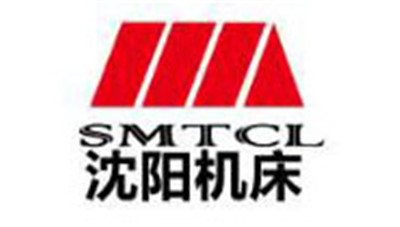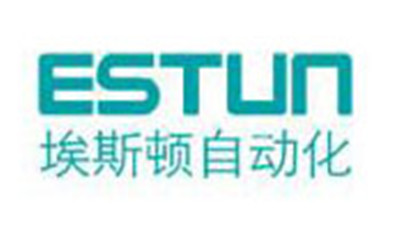The Future of Enhancing Device Performance with Chip Common Mode Chokes Inductor
Table of Contents
- The Significance of Chip Common Mode Chokes in Modern Electronics Performance
- Understanding the Mechanism of Inductors in Noise Suppression Applications
- Industry Insights: Market Growth and Adoption of Common Mode Chokes
- Performance Metrics: Evaluating the Impact of Inductors on Device Efficiency
- Future Trends: Innovations in Chip Design and Inductor Technology
- Case Studies: Successful Implementations of Common Mode Chokes in Devices
- FAQS
- Conclusion
- Related Posts
You know, integrating Chip Common Mode Chokes Inductor tech into today's electronic gadgets is a pretty big leap forward. It really boosts how well devices perform. I’ve seen industry reports that say the global market for choke inductors is expected to hit around $5.52 billion by 2026, growing at about 4.8% annually from 2021 to 2026. A lot of this demand comes from the need to cut down electromagnetic interference (EMI) and keep signals clear, especially in high-frequency stuff. Dezhou Xinping Electronics Co., Ltd., a leading high-tech company founded back in March 2001, is actually quite experienced in making precision electronic transformers, and they're pretty well-positioned to jump into this booming field. By using innovative designs like the 'digital + Top type' Chip Common Mode Chokes Inductor, companies can really step up the performance and reliability of their products—helping them stay ahead in this tech-driven market that keeps getting more demanding.

The Significance of Chip Common Mode Chokes in Modern Electronics Performance
You know, in today’s electronics world, chip common mode chokes really shouldn’t be overlooked. These tiny components actually play a pretty big role—they help cut down electromagnetic interference (EMI) and boost device performance overall. I read somewhere that, according to MarketsandMarkets, the global market for EMI shielding is expected to hit around $10.8 billion by 2024. Crazy, right? That just shows how much we rely on good interference control in a ton of electronic gadgets. Chip common mode chokes act like filters, tackling noise issues—especially important in high-frequency circuits where keeping signals clean is absolutely critical.
So, for all you designers out there, here’s a tip: when you're choosing these chokes, go for ones with high impedance at the frequencies you're working with. That way, you get better noise suppression without messing up your signal quality. Also, don’t forget to check the saturation current rating of the choke. A higher rating isn’t just about reliability—it helps your device perform better under different loads.
Nowadays, embedding these chokes into devices is pretty much the norm. They’re crucial for making gadgets more efficient and stable. Research by Yole Développement shows that more and more industries, like automotive and telecom, are jumping on the bandwagon—pushing for better performance all the time. Making sure you implement these chokes correctly can really extend your device’s lifespan and boost its functionality. Honestly, it’s hard to imagine making advanced tech without them these days.

Understanding the Mechanism of Inductors in Noise Suppression Applications
Inductors, especially the tiny chip common mode chokes, are actually pretty important when it comes to cutting down noise in electronic gadgets. Even though they’re small, these components pack a punch—helping to block out electromagnetic interference (EMI) by stopping unwanted noise while still letting the good signals go through. When manufacturers add inductors to their circuits, they often see a big boost in device performance and reliability—especially in noisy environments where electrical interference is common.

One handy tip for making the most out of chip common mode chokes? Pick the right inductor based on the frequency your device runs at. Knowing the device’s operating frequency helps ensure that the choke can do its job properly and suppress noise effectively. Also, don’t forget to check the inductor’s impedance and saturation current ratings to make sure they can handle what your application demands.
And here’s another tip—placement really matters. Putting the inductor close to where the noise originates can make a big difference in how well it reduces interference. Plus, pairing the inductor with capacitors can create a more solid filter system, tackling different frequency ranges to boost overall performance. By keeping these tricks in mind, designers can really unlock the full potential of inductors for noise suppression, leading to devices that run smoother and more reliably.
Industry Insights: Market Growth and Adoption of Common Mode Chokes
Lately, it seems like everyone’s talking about common mode chokes — and honestly, they’re becoming a pretty big deal across all sorts of tech sectors. You see, as industries push for better device performance, these little components are stepping up their game. They’re super important in power inductors and transformers now, mainly because they help improve energy efficiency and cut down on electromagnetic noise. Thanks to breakthroughs in renewable energy tech, there's a real push for power management solutions that are both smarter and more reliable.
From what I’ve seen, the demand for common mode chokes is just climbing like crazy. Experts are saying we’re looking at some serious growth in areas like audio gear, telecom, and automotive tech. As manufacturers get more creative and start weaving these components into their designs, it’s going to have a pretty wide ripple effect — not just making devices better, but shifting how the whole market behaves. Basically, using common mode chokes strategically could totally change how industries think about circuit design and electromagnetic compatibility, paving the way for more efficient electronic systems down the line.
The Future of Enhancing Device Performance with Chip Common Mode Chokes Inductor
Performance Metrics: Evaluating the Impact of Inductors on Device Efficiency
In the fast-changing world of electronics, using chip common mode chokes and inductors has really become a key factor in making devices work better and more efficiently. Lately, studies are showing that inductors can do a lot to cut down electromagnetic interference, or EMI, and boost how well power is converted. I read in a report from MarketsandMarkets that the global inductor market might hit around $3.1 billion by 2025—that’s a clear sign people are looking for components that keep devices running at their best.
But it’s not just about fighting EMI. The performance of inductors involves a bunch of other important aspects—things like the Q factor, the maximum current they can handle before saturating, and how stable they are across different temperatures. Research suggests that inductors with a high Q factor can really improve overall system efficiency—by as much as 25%. That’s why they’re so vital in all sorts of areas, from telecom equipment to cars. For example, a report by Yole Développement mentions that adding advanced inductors into power management systems in electric vehicles can bump up efficiency by around 10%. That’s a pretty big deal when it comes to saving energy.
And let’s not forget, inductors also play a big role in how well devices handle heat. As gadgets get smaller and more packed, managing heat becomes super important. A study from the Journal of Electronic Materials pointed out that an inductor’s ability to conduct heat impacts how well high-density circuits stay cool and last longer. Picking inductors with better thermal properties helps engineers keep devices reliable and longer-lasting, especially as the industry shifts toward energy-efficient, sustainable electronics. All in all, inductors are more than just components—they’re a crucial piece of the puzzle in making gadgets smarter and greener.
Future Trends: Innovations in Chip Design and Inductor Technology
The world of electronics manufacturing is actually on the brink of some pretty exciting changes, especially when it comes to chip design and inductor tech. As industries push for devices that are faster, more efficient, and just better overall, manufacturers are looking into all kinds of new approaches. In particular, the market for inductors—like those common mode chokes—seems set to grow a lot. This really comes down to the need for better electromagnetic compatibility and less signal interference in gadgets we use every day. Market research predicts that by 2026, the global inductor market could hit around USD 2.9 billion, growing at roughly 6% annually since 2021.
Meanwhile, startups are really at the forefront of this innovation wave. They’re coming up with fresh, tech-savvy solutions—using advanced materials and even machine learning to improve chip design. Right now, there are over 1,200 startups doing cool stuff in this space, with about 20 of them being seen as potential game-changers. These teams are all about making things smaller, boosting performance, and cutting costs on production. Plus, many are also paying attention to eco-friendly practices, which is a big hit among consumers who care about sustainability. As things continue to evolve, it’s clear that the future will be shaped by a mix of hardware breakthroughs and smarter software, leading to even better devices down the line.
The Future of Enhancing Device Performance with Chip Common Mode Chokes Inductor - Future Trends: Innovations in Chip Design and Inductor Technology
| Innovation Type | Description | Expected Impact | Target Applications |
|---|---|---|---|
| Advanced Chip Design | Incorporation of novel materials to reduce size and increase efficiency. | Higher performance with lower power consumption. | Consumer electronics, automotive electronics. |
| Miniaturization Techniques | Development of smaller inductor designs compatible with high-frequency applications. | Reduced space requirement in devices. | Wearable technology, IoT devices. |
| High-Frequency Operation | Inductors designed to perform well at higher frequencies. | Improved signal integrity and reduced electromagnetic interference. | Communication devices, RF applications. |
| Thermal Management Solutions | Innovative designs that dissipate heat more effectively. | Increased reliability and lifespan of components. | High-performance computing, industrial applications. |
| Eco-Friendly Materials | Utilization of sustainable materials in the production of inductors. | Reduced environmental impact of electronic waste. | Consumer electronics, green technology sectors. |
Case Studies: Successful Implementations of Common Mode Chokes in Devices
Lately, common mode chokes have become pretty much essential when it comes to boosting device performance, especially for noise reduction and keeping signals clear. There are quite a few real-world examples that show just how well they work across different gadgets — making everything more efficient and dependable. For example, in telecom gear, these chokes have done a fantastic job at cutting down electromagnetic interference. That means signals come through more clearly, and the overall performance gets a real upgrade. It’s a good reminder of how adding these tiny inductors can actually lead to some pretty big tech improvements.
By the way, if you’re thinking about including common mode chokes in your designs, make sure you pick the right ones for the frequency range you're working with. It can really make a difference in optimizing performance and avoiding pesky signal issues.
And here’s another cool example—auto electronics. These chokes are used to tame noise coming from electric systems, which helps not just in making the gadgets work better but also in boosting safety and extending their lifespan. Pretty neat, right?
Just one thing to keep in mind: always pay attention to how these chokes handle heat. Overheating can cause failures and mess up the device's functioning, so factoring in their thermal properties is a smart move.
FAQS
: Common mode chokes are components used to reduce electromagnetic interference (EMI) and improve device performance. They are gaining popularity due to the increasing demand for energy efficiency and reliable power management solutions, particularly in sectors such as renewable energy, audio, telecommunications, and automotive.
Common mode chokes can significantly enhance device performance by reducing EMI and improving power conversion efficiency. This leads to better operation of electronic systems and helps manufacturers meet regulatory compliance for electromagnetic emissions.
The demand for common mode chokes is expected to grow in various sectors, especially in audio, telecommunications, renewable energy, and automotive industries, as manufacturers incorporate them into their designs.
Key performance metrics for inductors include the Q factor, saturation current, and temperature stability. These metrics are crucial for evaluating how effectively inductors can improve device efficiency and performance.
The global inductor market is projected to reach $3.1 billion by 2025, reflecting an increasing demand for components that enhance optimal device performance.
Incorporating advanced inductors in power management circuits can lead to efficiency gains of up to 10% in electric vehicles, addressing energy consumption challenges and promoting more sustainable automotive solutions.
Thermal performance is critical because as electronic devices become more compact, effective heat dissipation is necessary to prevent overheating. Selecting inductors with superior thermal characteristics can enhance thermal management and increase the longevity and reliability of devices.
Common mode chokes play a strategic role in circuit design by helping industries achieve better electromagnetic compliance and efficiency, setting the stage for advancements in electronic systems and technology integration.
Trends such as the advancement of renewable energy technologies and the demand for enhanced device performance and energy efficiency are significantly influencing the adoption of common mode chokes in various applications.
Inductors with a high Q factor can enhance overall system efficiency by up to 25%, making them vital in various applications, including telecommunications and automotive systems.
Conclusion
In today’s fast-moving world of electronics, it’s becoming more and more obvious how important Chip Common Mode Chokes Inductors really are. These little components might not seem like much, but they do a big job by helping to keep our devices running smoothly—mainly by filtering out noise and electromagnetic interference that can mess things up. When you really get into how inductors work, you start to see just how vital they are for reducing noise, which in turn makes gadgets more reliable and efficient.
Looking ahead, industry experts are pretty optimistic about the future of common mode chokes. Thanks to ongoing improvements in chip design and inductor tech, we’re expecting even wider adoption. If you check out performance stats, it’s clear that adding these inductors can seriously boost device efficiency. And if you look at case studies from top manufacturers, like Dezhou Xinping Electronics Co., Ltd., it’s obvious that these inductors are making a real difference—they’re helping drive the latest innovations in electronics today.
Related Posts
-

30 Reasons Why the Best 30 Kva Transformer is Essential for Your Global Procurement Strategy
-

The Future of Efficient Power Solutions with 30 Kva Transformers
-

How to Choose the Right Substation Transformer for Your Energy Needs Based on Load Calculation
-

Innovative Solutions for Optimal 33kv Transformer Performance
-

Understanding the Challenges Faced with Converter Transformers in Industrial Applications
-

Understanding the Versatility of 10kva Transformer Applications in Various Industries

















